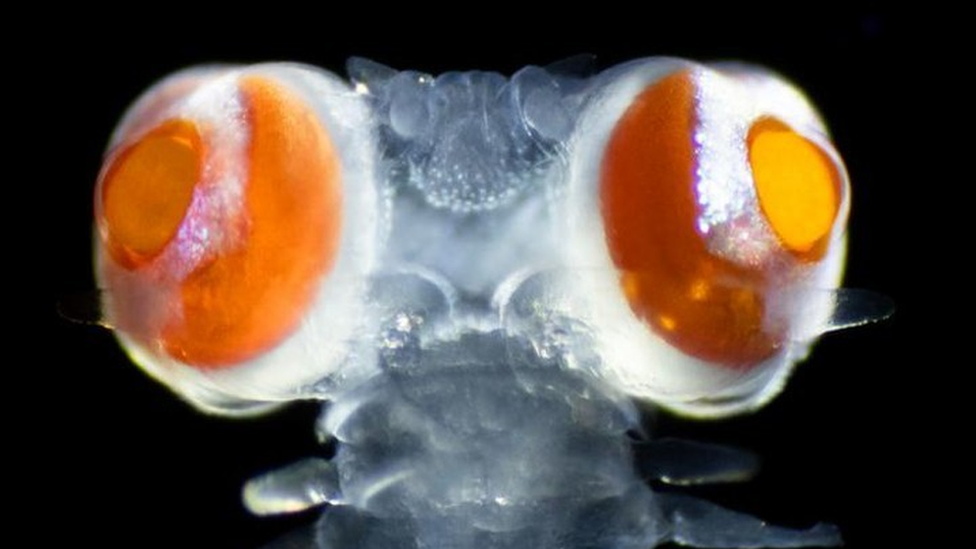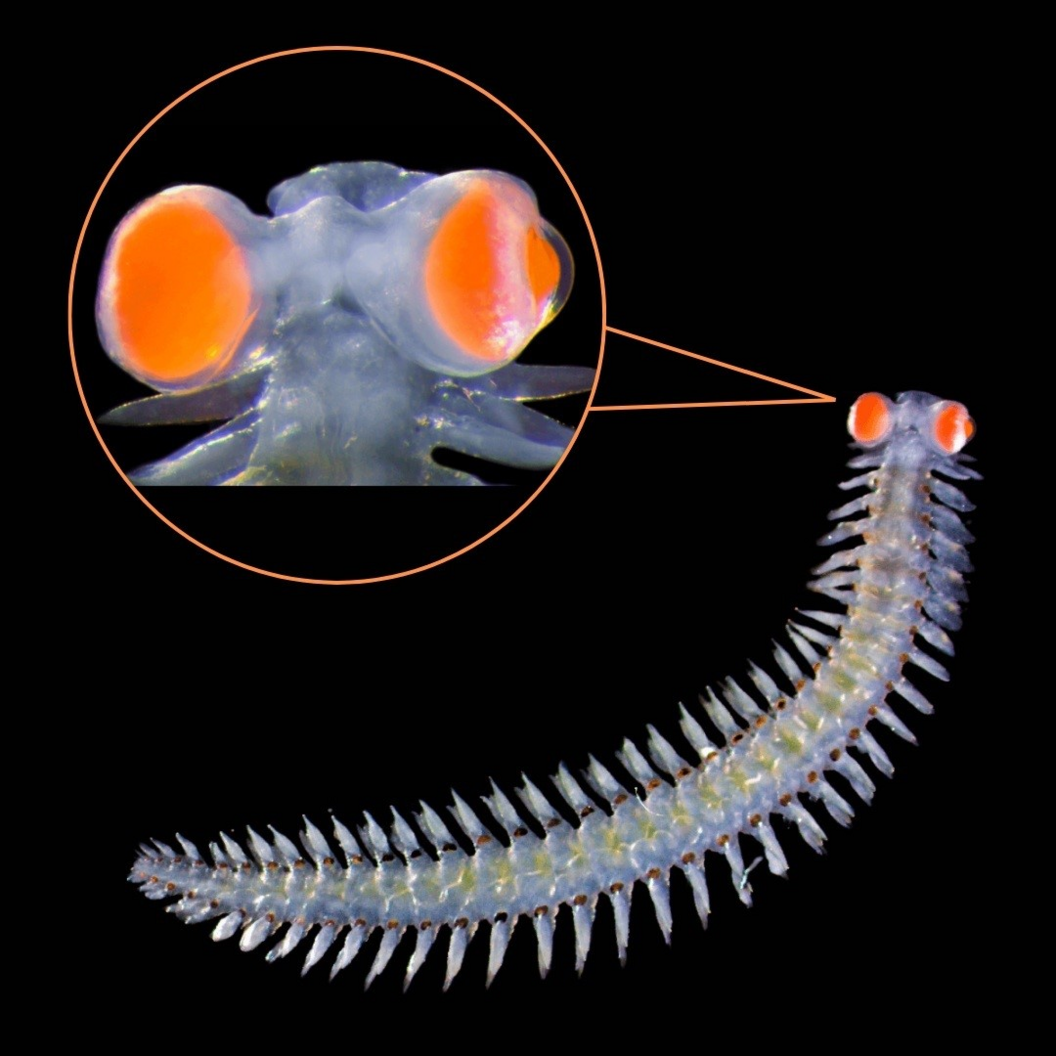Why does this sea worm have GIANT eyes?
- Published
- comments

Meet the Vanadis bristle worm - a creature no bigger than a piece of spaghetti.
This tiny marine worm lives around the Italian island of Ponza and is nocturnal, which means it sleeps in the day and comes out at night.
Despite its small body, it's eyes are so big that scientists believe that they weigh 20 times more than the rest of its head!
Researchers believe that the reason for the creature's big eyes, is so that the worms can secretly communicate with each other.
Animals that live in the sea don't usually have amazing vision, Michael Bok from Lund University in Sweden has been studying the tiny creature and says the team's findings came as a surprise.
"Our research has shown that the worm has outstanding vision. Its eyesight is on a par with that of mice or rats, despite being a relatively simple organism with a minuscule brain."
The research also found that the creature can see ultraviolet light which is invisible to human eyes, and they think that this is what they may use to communicate secretly.
Light waves are how we see light. Some light waves are visible to humans, but others are not. Ultraviolet rays are shorter light rays produced by the sun. These light waves can't be seen by humans but can be seen by some insects like bees.

Scientists think that these worms are UV bioluminescent - this means that they produce and give out UV light to communicate.
The researchers believe the worms use UV light instead of normal light because it allows them to stay hidden from predators - who can't see UV light.
"We have a theory that the worms themselves are bioluminescent and communicate with each other via light. If you use normal blue or green light as bioluminescence, you also risk attracting predators. But, if instead, the worm uses UV light, it will remain invisible to animals other than those of its own species," says Anders Garm, a marine biologist from the University of Copenhagen in Denmark.
If their theory is confirmed to be correct it will be a huge step into understanding how light is used in the animal kingdom.
"It makes things truly exciting as UV bioluminescence has yet to be witnessed in any other animal," Garm added.
